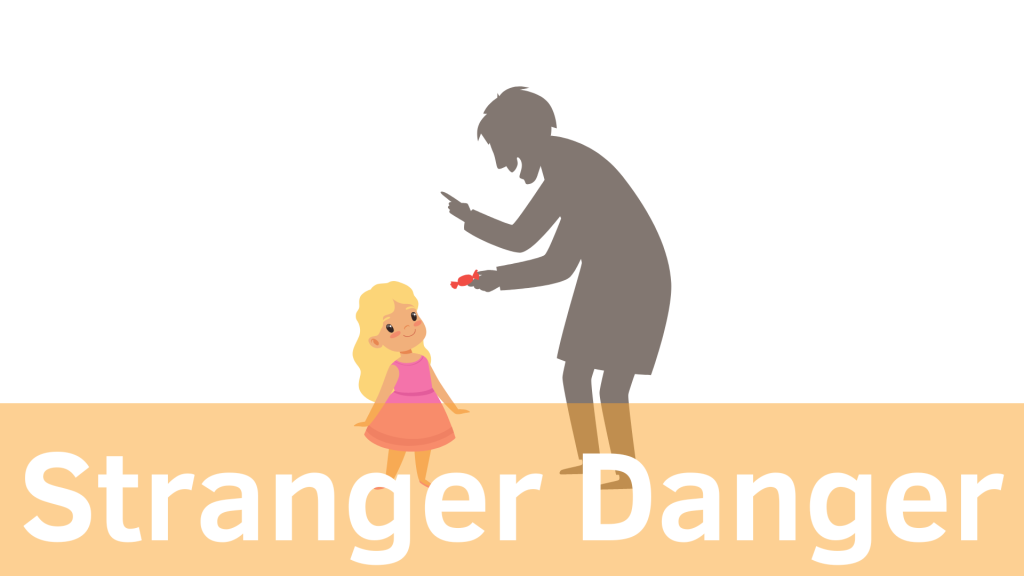In this article:
Introduction:
As parents, ensuring the safety of our children is a top priority. Teaching children about stranger danger is an essential aspect of their personal safety education. Stranger danger refers to the concept of caution and awareness when encountering unfamiliar individuals. By equipping children with the knowledge and skills to recognize potentially dangerous situations and make informed decisions, we empower them to protect themselves and navigate the world with confidence. In this article, we will explore the significance of teaching stranger danger, practical strategies for parents to educate their children, and guidelines for promoting personal safety.
I. Understanding the Importance of Teaching Stranger Danger
Before we delve into strategies for teaching stranger danger, let’s establish a clear understanding of its significance:
- Definition of Stranger Danger: Stranger danger refers to the concept of caution and wariness when interacting with individuals who are unknown or unfamiliar to children.
- Importance of Teaching Stranger Danger:
- Personal Safety: Educating children about stranger danger helps them recognize potentially risky situations and take appropriate measures to stay safe.
- Empowerment: It empowers children to trust their instincts, make informed decisions, and assert their personal boundaries.
- Risk Reduction: Teaching stranger danger reduces the risk of children becoming victims of abduction, exploitation, or other forms of harm.
- Safety Awareness: It fosters an overall sense of safety awareness and preparedness in children.
II. Strategies for Teaching Stranger Danger
- Define “Strangers”:
- Explain to children that strangers are people they do not know or are unfamiliar with.
- Emphasize that not all strangers are necessarily dangerous, but it is important to be cautious when dealing with unfamiliar individuals.
- Discuss Personal Information:
- Teach children not to share personal information, such as their full name, address, phone number, or school name, with strangers.
- Role-play different scenarios where strangers may ask for personal information and guide children on how to respond assertively and refuse such requests.
- Recognize Unsafe Situations:
- Help children identify situations that may be potentially unsafe, such as being approached by strangers in isolated areas or being asked to go somewhere without their parent’s permission.
- Encourage them to trust their instincts and seek help or move away from the situation if they feel uncomfortable.
- Establish Boundaries:
- Teach children about personal boundaries and the importance of saying “no” to any unwanted physical contact or actions.
- Empower them to assertively communicate their boundaries and seek help from a trusted adult if someone violates their personal space.
- Role-play Scenarios:
- Engage children in age-appropriate role-playing exercises to practice responding to strangers’ approaches or requests.
- Reinforce safe and assertive behaviors, such as walking away, seeking help from a trusted adult, or using a loud voice to attract attention.
- Teach Safe Places and Trusted Adults:
- Educate children about safe places they can seek help when in public, such as police stations, fire stations, or trusted businesses.
- Help children identify trusted adults they can turn to for assistance, such as parents, teachers, or designated family friends.
- Develop Communication Skills:
- Teach children effective communication skills, including asking for help, expressing their concerns, and seeking assistance from trustworthy individuals.
- Role-play different scenarios to build their confidence in communicating their needs and concerns to adults.
III. Guidelines for Promoting Personal Safety
- Encourage Open Communication:
- Foster an environment where children feel comfortable discussing their experiences, concerns, or encounters with unfamiliar individuals.
- Assure them that they can approach their parents without fear of judgment or punishment.
- Teach Street Smarts:
- Educate children about basic street smarts, such as walking on well-lit paths, staying in groups when possible, and avoiding shortcuts through isolated areas.
- Emphasize the importance of being aware of their surroundings and trusting their instincts.
- Internet Safety:
- Discuss the potential risks associated with online interactions and teach children to be cautious when communicating with strangers on the internet.
- Encourage them to seek parental guidance and permission before sharing personal information online.
- Set Clear Rules and Boundaries:
- Establish clear rules and boundaries regarding where children can go, who they can interact with, and what information they can share with others.
- Regularly reinforce these rules and explain their importance.
- Be a Role Model:
- Model safe behavior and caution when interacting with unfamiliar individuals.
- Demonstrate assertiveness, respectful communication, and appropriate personal boundaries in your own interactions.
- Develop Self-Confidence:
- Encourage children to develop self-confidence and self-esteem, as it can help them assert themselves in unfamiliar situations.
- Praise their efforts in practicing safety skills and celebrate their ability to make informed decisions.
Conclusion:
Teaching children about stranger danger is an essential aspect of their personal safety education. By providing them with age-appropriate knowledge, strategies, and guidelines, parents can empower their children to recognize potentially dangerous situations, assert their personal boundaries, and seek help when needed. Promoting open communication, practicing assertiveness, and fostering street smarts develop a strong foundation for children to navigate the world with confidence and safety. With the knowledge and skills to identify potential risks, children can make informed decisions, protect themselves, and cultivate a sense of personal empowerment. By instilling the principles of stranger danger, parents play a critical role in equipping their children with the tools to stay safe and navigate their journey through life with confidence and resilience.



